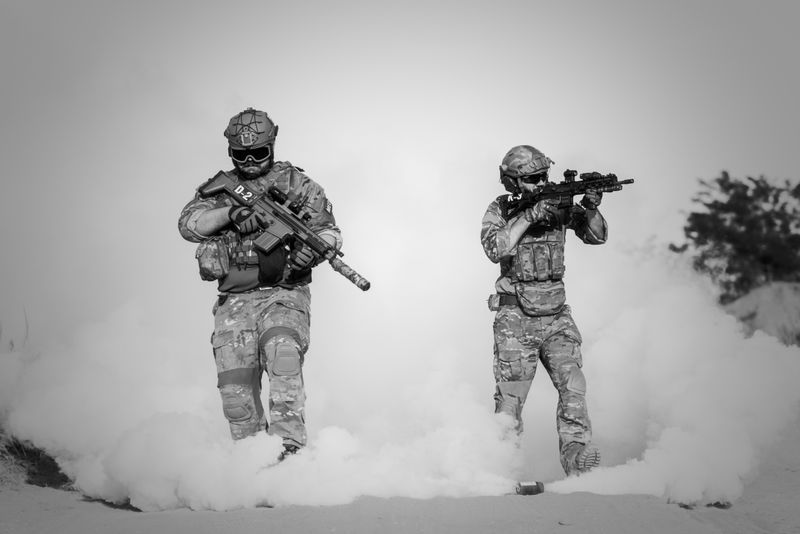The Rising Tensions in the Middle East: US Navy Warship Intercepts Projectiles near Yemen Coast
Interception of Missiles by US Navy
In a recent development, a US Navy warship operating in the Middle East intercepted multiple projectiles near the coast of Yemen. Two US officials, speaking on condition of anonymity, informed CNN that the missiles were fired by Iranian-backed Houthi militants, who have been engaged in an ongoing conflict in Yemen. According to one of the officials, approximately 2-3 missiles were intercepted.
Brig. Gen. Pat Ryder, the Pentagon press secretary, confirmed later that the USS Carney had successfully shot down three land attack missiles and several drones launched by Iran-backed Houthi forces in Yemen. Ryder praised the demonstration of the integrated air and missile defense architecture built in the Middle East and emphasized the preparedness of the US to protect its partners and interests in the region. He stated that there were no casualties among US forces or reports of any civilians being harmed.
Potential Targets and the Role of US Fleet Forces
The Pentagon spokesperson also mentioned that they could not conclusively determine the targets of the missiles and drones. However, he stated that they were launched from Yemen and were headed northward along the Red Sea, potentially towards targets in Israel. The USS Carney, after transiting through the Suez Canal into the Red Sea, is expected to contribute to maritime security and stability in the Middle East.
Increasing Tensions and Attacks on US Bases
These recent incidents are part of a string of attacks on US bases in Syria and Iraq, amid escalating tensions in the region caused by the ongoing conflict between Israel and Hamas. Drone attacks targeted a base in Syria, resulting in minor injuries to coalition forces. In Iraq, early warning systems alerted a possible threat at the al-Asad airbase, prompting personnel to seek shelter. Although no attack occurred, an American civilian contractor suffered a cardiac episode and passed away soon after. US forces in Iraq also defended against three drones, with two drones targeting the al-Asad airbase and another drone being engaged and destroyed near Bashur airbase in northern Iraq.
Assessing the Situation and US Response
The Pentagon acknowledged that it is still assessing the connections between these attacks and the ongoing conflict between Israel and Hamas, as well as the anger over US support for Israel in the region. Ryder mentioned that their focus remains on deterring potential broader regional conflict. Secretary of Defense Lloyd Austin has been engaged in a series of calls with leaders from Arab nations and Israel, reaffirming US support for Israel and emphasizing the importance of safeguarding civilians. Ryder emphasized that the US will take all necessary actions to defend US and coalition forces against any threat. He added that any response, if deemed necessary, will come at a time and manner chosen by the US.
Analysis and Implications
The Impact of Proxy Wars and Regional Conflicts
The intercepting of missiles near Yemen‘s coast by the US Navy further highlights the complex web of proxy wars and regional conflicts in the Middle East. The ongoing conflict in Yemen, fueled by various internal and external actors, has already caused immense suffering for the Yemeni people. The involvement of Iranian-backed Houthi militants adds another dimension to the already complicated situation. Iran’s alleged support for these militants not only exacerbates tensions between Iran and the US but also has the potential to escalate the conflict between Israel and its adversaries.
Regional Security and US Interests
The successful interception of missiles by the USS Carney underscores the importance of regional security and the US commitment to protect its partners and interests in the Middle East. With the presence of US naval forces in the area, the US aims to deter any potential attacks and maintain stability in the region. However, as recent events have shown, the threat of attacks from non-state actors, including the use of drones, poses a significant challenge to conventional defense strategies.
US-Israel Relations and the Broader Conflict
The ongoing conflict between Israel and Hamas, coupled with US support for Israel, has intensified tensions in the Middle East. The attacks on US bases could be seen as an attempt to escalate the conflict and draw the US more directly into the ongoing hostilities. As the US continues to navigate these dynamics, Secretary of Defense Lloyd Austin’s calls with Arab and Israeli leaders demonstrate an effort to prevent further escalation. The US is keen to reiterate its support for Israel while emphasizing the importance of preventing a wider regional conflict.
Editorial and Advice
The Need for Diplomatic Efforts
As the situation in the Middle East remains precarious, it is crucial for all parties involved to prioritize diplomatic efforts. The use of military force and the escalating cycle of attacks only lead to more destruction and suffering. The US, Iran, Israel, and other key regional players must engage in dialogue to de-escalate tensions, address underlying issues, and work towards lasting peace and stability.
Mitigating the Threat of Non-State Actors
The recent drone attacks on US bases highlight the increasing threat posed by non-state actors and their use of asymmetric tactics. Governments and military forces around the world must enhance their intelligence capabilities and develop effective countermeasures to neutralize these threats. International cooperation and information-sharing among states can play a crucial role in mitigating the risk posed by these non-state actors.
Safeguarding Civilians and Humanitarian Assistance
Amidst the hostilities, it is essential to emphasize the importance of safeguarding civilians caught in conflict zones. The impact of the ongoing conflicts on innocent lives cannot be overlooked or ignored. Countries involved must take measures to mitigate civilian casualties, ensure access to humanitarian aid, and commit to ceasefire agreements. International organizations, such as the United Nations, should play an active role in advocating for the protection of civilians and facilitating humanitarian assistance.
In conclusion, the interception of missiles near the coast of Yemen by a US Navy warship serves as a reminder of the complex and volatile nature of the conflicts in the Middle East. These incidents highlight the need for diplomatic efforts, strategies to mitigate threats from non-state actors, and a commitment to safeguarding civilians. The US must continue to engage in dialogue with regional actors, emphasizing the importance of de-escalation and the pursuit of peaceful resolutions.

<< photo by Pixabay >>
The image is for illustrative purposes only and does not depict the actual situation.
You might want to read !
- Bad Bunny’s Triumphant Return: A Spectacular Comeback Tour Taking North America by Storm
- The Evolving Threat in Yemen: US Navy Warship Successfully Defends Against Projectiles
- Florida Gov. Ron DeSantis’ Interview on “Face the Nation”: Insights into State Policies and Pandemic Response
- Forecasting the Summer Storm: Predicting Seasonal Precipitation for Desert Locusts in the Wilderness
- Editorial Exploration: Taking a somber look at the devastating loss of four Pepperdine University students in a tragic Malibu PCH crash, examining the impact on the university and the community at large, and investigating the factors that led to the accident.
Title: Tragedy Strikes Pepperdine: Remembering the Fallen Students of the Malibu PCH Crash
- Intense Battle: Charlotte FC Takes on Inter Miami CF
- The Big Shake: Bay Area Rattled by Earthquake, Prompting Emergency Alert
- The Importance of Ethics in Government: Insights of a Resigned State Department Official
- Gwyneth Paltrow and the Complexity of the Nepo Baby Label




